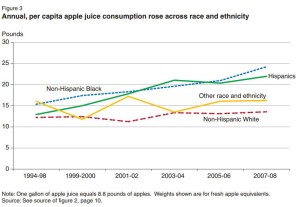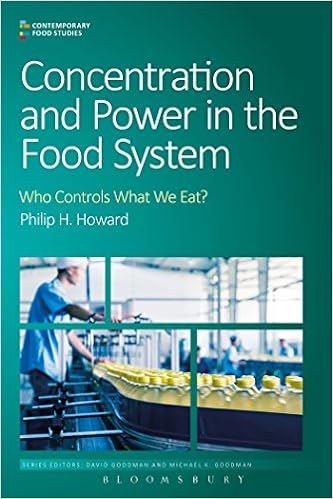The strange story of my accepted but yet-to-be published commentary on a Disney-sponsored study gets stranger
Last week, StatNews.com revealed that the Walt Disney company tried to withdraw a research study it had funded because its University of Colorado authors, Jim Hill and John Peters, were behind the Global Energy Balance Network, the group funded by Coca-Cola to minimize the role of sugary drinks in obesity.
The headline: “Disney, fearing a scandal, tried to press journal to withdraw research paper.”
StatNews.com based the story on e-mails obtained from the University of Colorado by Gary Ruskin of US Right to Know through open records requests.
An e-mail from John Peters to a Disney representative says “could I ask you to look this [draft press release] over and edit as you see fit.”
But the authors’ conflict-of-interest disclosure statement says:
This work was supported by the Walt Disney Company and by the National Institutes of Health (grant no. DK48520). The Walt Disney Company and the National Institutes of Health had no role in the design, analysis, or writing of this article.
This may be strictly true, but the authors were asking Disney to approve their press release, which is not exactly “no role.”
Readers: does any of this sound familiar? In February, I wrote a blog post about precisely this article for which I wrote an invited Commentary, accepted by the journal but not published. I said:
The paper turned out to be by a group of authors, among them John Peters and Jim Hill, both members of the ill-fated Global Energy Balance Network, the subject of an investigation by the New York Times last August…I thought Disney’s sponsorship of this research and its withholding of critical baseline and sales data on kids’ meals that the company considered proprietary did indeed deserve comment, and wrote my piece accordingly. Brian Wansink [the journal editor] soon accepted it for publication but to my surprise, gave it to Peters et al. for rebuttal. They filed a lengthy response. I was then given the opportunity to respond, and did so, briefly.
My Commentary—and the back-and-forth—were omitted (although they are online and will be published in a later issue, apparently).
Brian Wansink wrote colleagues who are editing the next issue of the journal that the back-and-forth debate over the article “was heated, and it also dragged on (because of Disney approvals) and – as we feared – it missed the deadline of our issue.”
This suggests that Disney had even more of an involvement, but when I asked Wansink if Disney approvals were responsible for his having dropped my Commentary, he said no, they just ran out of room.
We now know that Disney was more involved than disclosed. How involved? We dont know but perhaps other e-mails will surface to answer that question.
In their Rebuttal to my Commentary, Hill and Peters said
We were disappointed by Dr. Nestle’s assertion that Disney’s decision to not allow publication of kid’s park attendance numbers or raw kid’s meal sales numbers (because of their proprietary nature in the competitive business of theme parks) and the fact that Disney funded the study raises “red flags” about the veracity of the data presented…While we believe caution and transparency are always key ingredients when working with industry we also believe that solving the obesity problem will require finding a productive model for working together that can channel everyone’s energy toward finding solutions. The Disney study is a good example of why partnering with industry can help move the field forward.
I am sorry I disappointed them, but I disagree.
The e-mails demonstrate even more forcefully that the Disney study is a good example of why partnering with industry should raise acres of red flags.
To repeat my response:
The response from Peters and Hill still fails to acknowledge the severity of the problems posed by Disney’s sponsorship of their research—the company’s failure to produce data essential for proper interpretation of study results, and the level to which sponsorship by food companies biases such interpretations. At one point, Disney boasted of the results of this research, confirming its benefit to marketing goals. The threat of industry sponsorship to research credibility has received considerable press attention in recent months, as must surely be known to these authors. [References one and two].
Because of Disney’s funding, the company must have thought it had the right to determine whether and how its funded study would be published. And, as these e-mails reveal, therein lies the problem.





Americans these days don’t want artificial and unsustainably produced ingredients in the food they buy and eat. For the makers of highly processed foods – ultraprocessed in today’s terminology – there isn’t a lot that they can do to make the products appear fresh and natural.
But Campbell’s is certainly trying. A few months after announcing that it will phase out genetically modified organisms (GMOs), the iconic soup company said on Friday that it will remove Bisphenol-A (BPA) from its cans by next year.
BPA, you will recall, is a chemical typically used in polycarbonate plastic containers and in the epoxy linings of food cans. It’s also an endocrine disrupter, which means it can interfere with the work our hormones are doing. Some research finds BPA to have effects on childhood development and reproduction.
Although the FDA doesn’t believe evidence of potential harm is sufficient to ban BPA from the food supply, the agency discourages use of BPA-polycarbonate or epoxy resins in baby bottles, sippy cups or packaging for infant formulas. For the past year or so, other retailers have been working hard to phase out BPA and to reassure customers that their cans and packages are safe.
All of these companies sell highly processed foods in an era when the public is demanding – and voting with their dollars – for fresh, natural, organic, locally grown and sustainably produced ingredients.
They can’t provide those things, but they can tout the bad, or unpopular, things that aren’t part of their product, the “no’s”: no unnatural additives, no artificial colors or flavors, no high fructose corn syrup, no trans fat, no gluten and, yes, no GMOs or BPA.
Let me add something about companies labeling their products GMO-free. In my view, the food biotechnology industry created this market – and greatly promoted the market for organics, which do not allow GMOs – by refusing to label which of its products contain GMOs and getting the FDA to go along with that decision. Whether or not GMOs are harmful, transparency in food marketing is hugely important to increasing segments of the public. People don’t trust the food industry to act in the public interest; transparency increases trust.
Vermont voted last year to mandate GMO labeling in the state – the US Senate rejected a bill in mid-March attempting to undermine it – and food conglomerates such as Campbell’s, General Mills, ConAgra, Kellogg and Mars have committed to labeling their products as containing GMO.
In addition to removing BPA from packaging and GMO from products, at least 11 other companies have announced recently that say they are phasing out as many artificial additives as possible, as quickly as they can.
Taco Bell, for example, will get rid of Yellow Dye #6, high fructose corn syrup, palm oil and artificial preservatives, and replace them with “natural” ingredients. Huge food companies such as Kraft, Nestlé (no relation) and General Mills are heading in the same direction.
All this may well benefit consumers to an extent. It also makes perfect sense from a business perspective: the “no’s” sell. But what everyone needs to remember is that foods labeled “free from” still have calories and may well contain excessive salt and sugars. The healthiest diets contain vegetables and lots of other relatively unprocessed foods. No amount of subtraction from highly processed foods is going to change that.